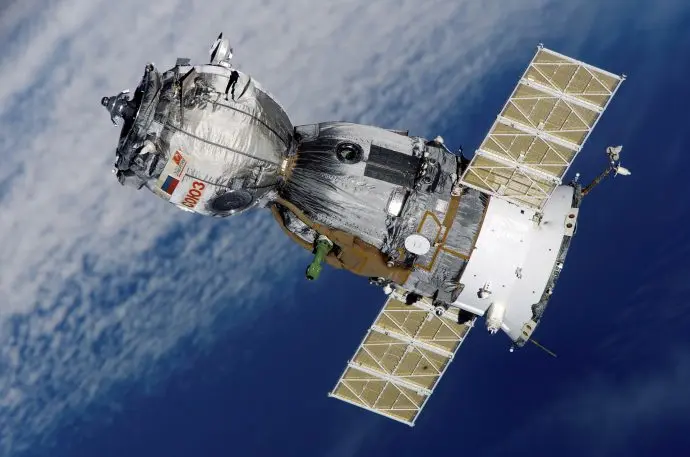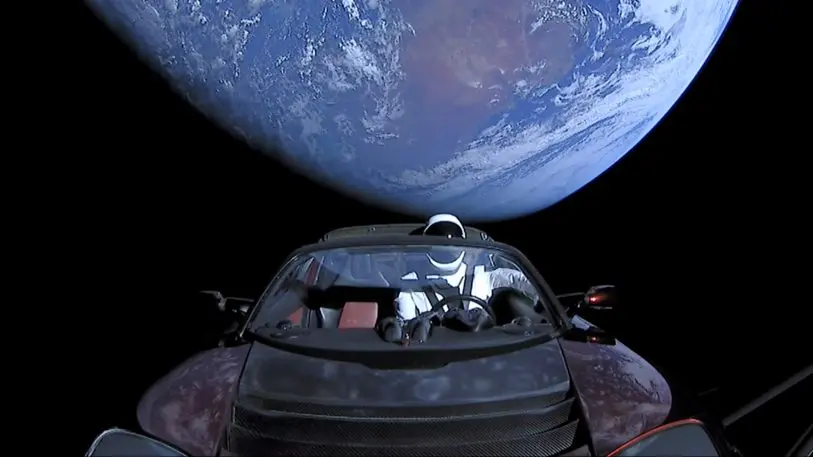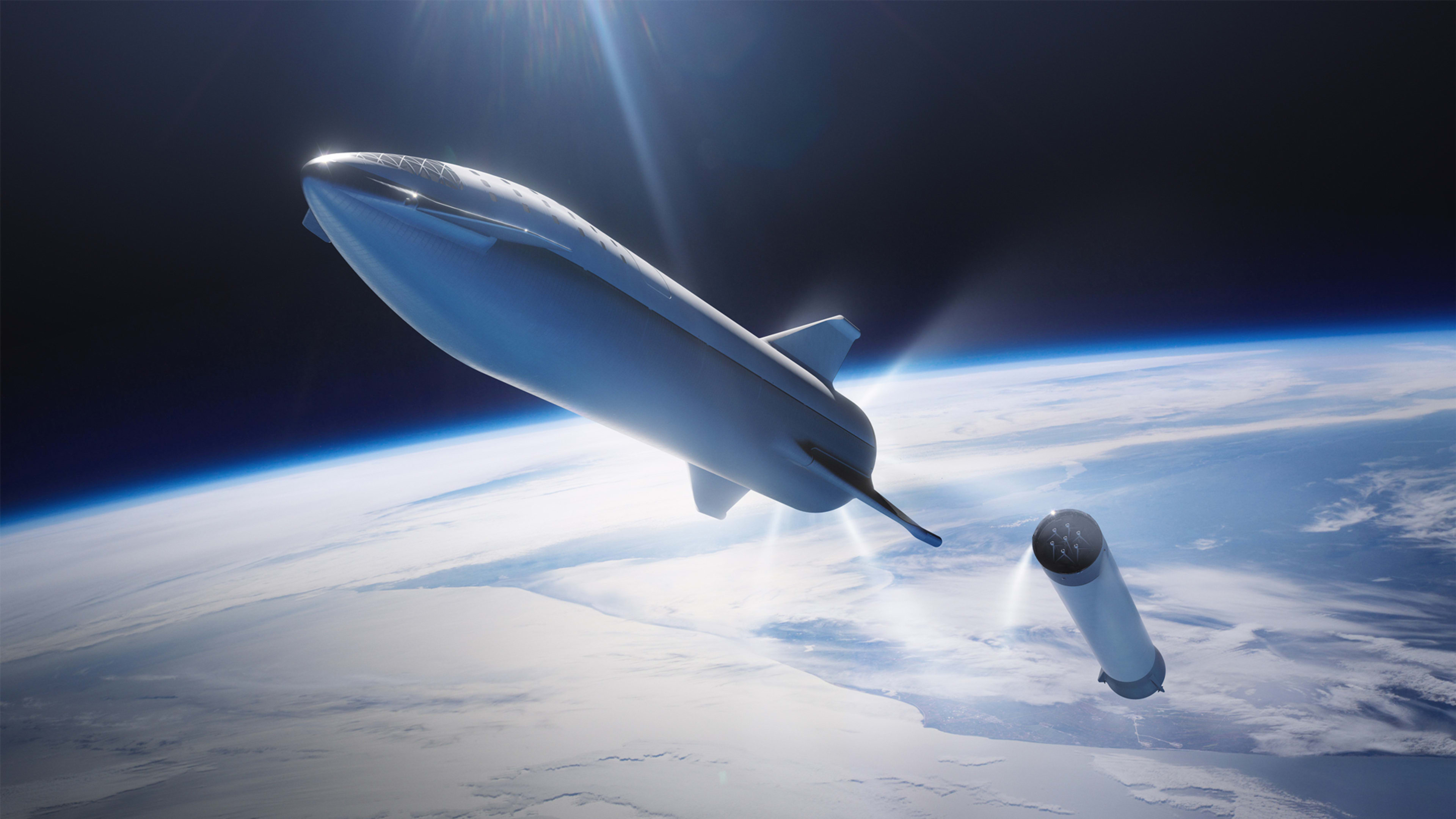Space starts 62 miles away, but in the past few months it has felt much closer.
Just yesterday, a pair of Japanese robots may have landed on an asteroid, as part of the country’s research efforts and amid a surge in startups focused on asteroid mining. Last week saw finger-pointing reminiscent of the Cold War over possible sabotage of the Soyuz Spacecraft used by Russia and the U.S. Every other week, there’s another rocket fired into space by one of several eccentric billionaires, who are also trying sell you tickets for orbit (or to colonize Mars). Recently, SpaceX started its launch of thousands of satellites into space to beam internet virtually anywhere in the world. And earlier in the summer President Trump prompted plenty of head-scratching and Star Wars puns with his surprise announcement of a Space Force.
That’s a lot of activity, fueling intense discussions and fiery debates about the commercialization and militarization of space, the proper role of humans in our galaxy, and the future of humanity. Yet it’s all guided by an outdated set of rules that were established a few years before Neil Armstrong took that first fateful step on the moon. The 1967 Outer Space Treaty was shaped by paranoia over the space race between the Soviets and the Americans, and even the brightest minds of the time couldn’t anticipate the complexities of now and tomorrow.
In a long-overdue effort to prepare for that future, on Tuesday the UN will use the 50th anniversary of a Conference on the Exploration and Peaceful Uses of Outer Space to “renew and strengthen its mandate” and to call attention to developing pertinent laws. As it stands, the current treaty bans the placement of WMDs in space, forbids any military action past the atmosphere, and declares the exploration of space for the benefit of all countries.
But the 50-year-old treaty definitely needs some updating. While speaking as a U.S. Representative from Oklahoma, Jim Bridenstine said the treaty was mired in Cold War thought, and “now, almost every nation on Earth has some sort of presence in space, and we have to be concerned with threats like jamming, dazzling, spoofing, and hacking satellite constellations.” (Bridenstine was eventually tapped by Trump to head NASA, despite his lack of scientific experience.)

As below, so above
So what kind of challenges should we expect going forward? Well, as below, so above. A look at the UN’s Convention on the Law of the Sea illustrates some current and potential problems. This treaty eventually established seabeds and ocean floor “beyond the limits of national jurisdiction.” The Law of the Sea proclaims such international spaces as the Common Heritage of Mankind, a phrase now applied to outer space.
Unfortunately, humanistic rhetoric is no match for strategic military advantage. And worse, the UN has a track record of being toothless. Recently China started building islands near the Philippines, a clear violation of international law. The nation then flat-out lied about its intention to militarize these spaces. China simply did not attend its hearing at the International Court of Justice.
Similar problems exist in today’s space race as different countries militarize in orbit. The EU’s Galileo satellite “proposes more civil-military synergies in European space systems,” two-thirds of Russia’s satellite force is military, and, of course, plans for the U.S.’s Space Force are proceeding apace. Legally, these actions fall within the Outer Space Treaty. Founder of the Global Space Law Center, Mark Sundahl, explains, “You can’t stop countries putting things into space for the purposes of self-defense.”
Yet there are some lines that shouldn’t be crossed, he argues. In 2007 China destroyed one of its own satellites. Technically the event did not break the peaceful use clause, but arms controls experts considered the explosion a flex of military muscle. “I mean that kind of behavior can’t be tolerated,” Sundahl says. “But no one spoke up against it as being a violation of the law. And as far as international community says right now, those kinds of action are legal . . . which is ridiculous.” The Chinese actions prompted American response, and added to the biggest problem facing the developing space industry today: orbital junk.
Raising awareness about the debris cluttering space takes up a lot of time at the Secure World Foundation, as well as its mission to promote “cooperative sustainability” in space. As project manager Josh Wolny says, its mission is to “help everyone realize they are invested in space and they have something to lose if the environment is damaged.” The foundation generates research and works with the UN as well as private companies to prepare for a successful space industry.
Wolny refers to something called the Kessler Syndrome, an increasingly likely scenario in which space junk crashes into a satellite, and thus produces more debris to become part of an ever-growing spiral that inevitably makes it almost impossible to safely launch into space or satellite orbit. And given our current lack of action when it comes to the Texas-sized garbage patch of plastic floating in the Pacific, orbital cleanliness may be a pipe dream.
You may assume it’s government’s job to protect the cosmos, but it’s not that simple. First of all, there are differing opinions about where in space all those hunks of metal are exactly located. And with tech tycoons like Elon Musk and Jeff Bezos funding development, they face little legal regulation. After orbit, companies will be within the jurisdiction of the country from which they chose to launch, similar to the high seas’ “flag of convenience.” But some are negotiating claims in advance per astronaut or even per specific mission, according to a recent article in The Atlantic. Things will get complicated.

A cosmos of complications
At the Global Space Law Center, Mark Sundahl explains the difficulties of the developing space law field, especially when it comes to commercialization. “I’m trying to strike the right balance. We’re being prospective where it can help the industry,” he says. Before businesses invest in space, they need protection. “They’re actually begging for regulation,” he says, “to give investors peace of mind.”
However, he also points out complications in things like safety regulations for tourist flights “because we don’t know what to regulate. We don’t know what a safe design is really like.” Similar questions exist for space mining, on-orbit refueling, servicing of satellites, private orbital space stations, or even the first hotel on the moon (which, as it stands, is totally illegal).
In the United States, space diplomacy is in its nascent stages. Andrea Thompson, the U.S. Undersecretary for Arms Control and International Security, said discussions at the State Department are just getting under way to address the major questions, such as: “What is a responsible nation state’s behavior in space?”
And while the U.S. Congress has struggled with the urgency of reforming space law, President Trump threw a wrench in the works by announcing the Space Force, which came as a surprise to many at NASA and in the space community after he signed a bill to reduce satellite clutter.
There was immediate backlash to the idea of a new branch of the military, but Wolny of the Secure World Foundation thinks that much of the hysteria is overblown. “When it becomes bad and what policy wonks like me don’t like is when issues are thrown up to the highest level of discussion, it becomes very partisan,” he says, “and so automatically every Democrat thinks that Space Force is the worst in the world.” Space Force, he says, could possibly be a “reorganization of how the U.S. uses space” and not necessarily something akin to the Death Star, or any other comically futuristic army many have feared. Thinking rationally, Wolny illustrates, a dedicated management system for space–military included–may be more effective than a sub-branch of the Air Force.
As for the betterment of all humankind, space is a large component of the UN’s 2030 Sustainability Development Goals, describing it as a “driver for sustainable development.” That idea has been kicked around for a while, mostly to describe the need to share space-derived data, though its vagueness leaves plenty of details to be filled in. But as the phrase appears on the General Assembly’s agenda, it can at least get people to talk about space law development with some urgency.
Otherwise, the next time you catch yourself stargazing, you may just have to be careful on whose star you make a wish.
Recognize your company's culture of innovation by applying to this year's Best Workplaces for Innovators Awards before the extended deadline, April 12.
